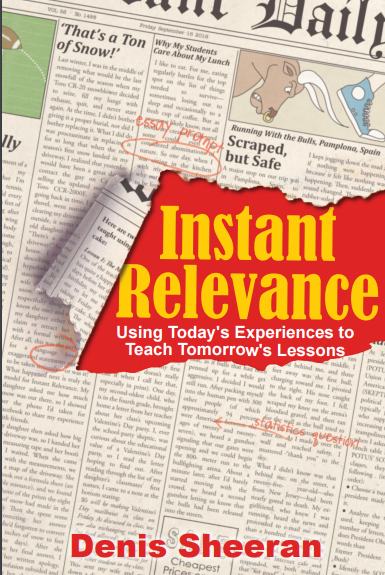The Funnies
When I was a kid I couldn’t wait for my Dad to come home from the convenience store with the Sunday Morning newspaper. He’d start pulling apart the sections, making a pile of news, sports, store flyers, and then, like a slow motion moment in a movie, he’d pull out…THE FUNNIES! I’m not sure where you’re from or what you called the newspaper comics, but in NJ we called them “the funnies” (insert future #MakeItReal Moment on regional dialect here). I can honestly say that I LOVED the funnies, although I can’t actually remember a time when I laughed out loud at one. Come to think of it, they’re not that funny. But they were a part of a grown up thing, the newspaper, that a child could covet as their very own. And they did approach situations from a different angle, often trying to make a twist ending by the third frame. Those Sundays of my youth have stuck with me, so now I visit gocomics.com every morning before I read the news to check out two of my favorite comics, Foxtrot Classic and F Minus.
Here is today’s F Minus Comic.

See? Not “funny” per se, but this time it made me think about something totally different. I realized we could use comics (funnies) like this as catalyst pieces for teaching students about the Claim, Evidence, Reasoning structure. You see, this comic makes a claim. To many, a totally impossible and outlandish claim. But it’s not outlandish to me, or to my wife. A few years ago we were having a philosophical conversation about why multiplying 2×5 does not equal 12. Her thought was that it only equals 10 because we start with zero. How come the expression 2×5 doesn’t imply that we’ve started with a 2, then brought in 5 more 2s? After a while, we decided to call this method “Mathematatics” and will put it on Wikipedia soon to see if people believe in it (suckers).
So look back at the F Minus comic. There’s a lot there, and plenty not there, too.
Claim: For a short time, 2 + 2 = 5.
Evidence: missing
Reasoning: missing
It’s time to put this in front of your students to see what they can do. Can they debunk the claim? Can they explain how this could be possible in the real world? Can they create a system like Mathematatics that could explain it instead, all the while citing their evidence (showing their work for math), then sharing their reasoning? I think they can. And I think it would be a lot of fun.
Let me know if you use The Funnies in your class for Claim, Evidence, Reasoning lessons, or other ways!!!
Share your ideas and lessons with me at the #MakeItReal Hashtag on twitter!!!

Remember to use the #MakeItReal Hashtag for sharing ideas!
Connect with Denis Sheeran at Denissheeran.com
Twitter: @MathDenisNJ and
#MakeItReal Chat Every Wednesday 9:30 pm EST for 30 Minutes.
Read Instant Relevance






